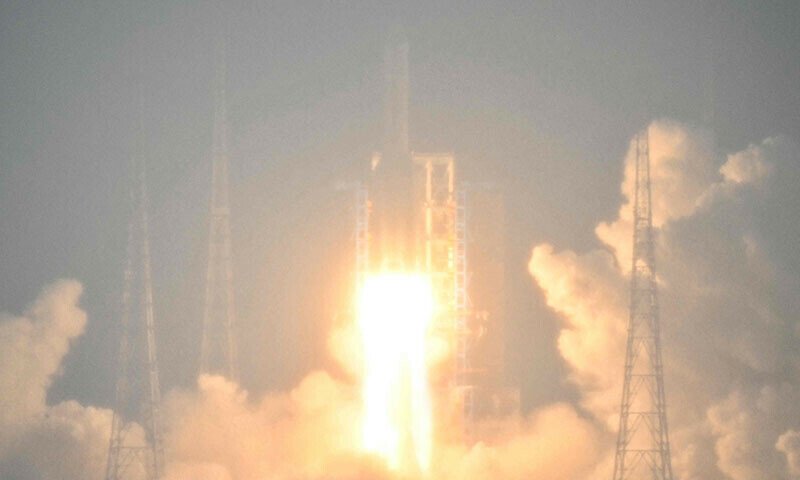In a significant stride for space exploration, a Pakistani satellite is embarking on a pioneering journey to orbit the moon as part of China’s Chang’e-6 lunar mission.
The mission, which aims to explore the moon’s “dark side”, will employ lunar research payloads from multiple countries, including Pakistan’s iCube Qamar satellite.
The Institute of Space Technology (IST) on Tuesday said Pakistan’s “historic” lunar module iCube-Q, which was designed by IST in collaboration with China’s Shanghai University (SJTU) and Pakistan’s national space agency Suparco, will be aboard Chang’e-6.
The mission, which was launched from Hainan, China, on a lucky Friday, is not only an important step in the exploration of stars but also demonstrates the strong cooperation between Pakistan and China in the field of science.
The participations of Pakistani satellites inclusion in the Chang’e-6 mission demonstrate cooperation between the two countries in space exploration.
This collaboration signifies Pakistan’s increasing role and capability in space research and highlights China’s commitment to fostering international cooperation in advancing scientific frontiers beyond Earth.
The launch of Chang’e-6, with its Pakistani payload, heralds a new era of shared exploration and discovery.
This mission is more than reaching the moon; it is a testament to the power of global partnerships in advancing the frontiers of human endeavor.
For Pakistan, this achievement represents a significant milestone in its space program.
The mission aims to bolster Pakistan’s position in the global space community and provide a platform for further advancements in scientific and technology.
It opens doors for future collaborations and reinforces Pakistan’s commitment to space exploration and its peaceful applications.
The successful integration of the Pakistani satellite into the Chang’e-6 mission also holds promise for scientific discovery.
Moreover, the partnership between Pakistan and China in the Chang’e-6 mission exemplifies the inclusive and collaborative nature of modern space exploration.
It demonstrates how countries with shared interests and aspirations can pool resources, expertise, and technologies to achieve ambitious scientific goals that benefit all of humanity.
China will send a robotic spacecraft in the coming days on a round trip to the moon’s far side in the first of three technically demanding missions that will pave the way for an inaugural Chinese crewed landing and a base on the lunar south pole.
China’s lunar mission will touch down on the moon’s far side to collect samples from the surface and return to Earth for research.
The mission, dubbed Chang’e, is named after the mythical Chinese moon goddess.
With no direct line of sight with the Earth, Chang’e-6 must rely on a recently deployed relay satellite orbiting the moon during its 53-day mission, including a never-before-attempted ascent from the moon’s “hidden” side on its return journey home.
Chang’e-6, carries cargo from China,France, Italy, Sweden and Pakistan, while Chang’e-7 will bear payloads from Russia, Switzerland and Thailand when it launches in 2026.
NASA is banned by US law from any collaboration, direct or indirect, with China.
Under the separate NASA-led Artemis Program astronauts will land near the south pole in 2026 — The first humans have landed on moon since 1972.
iCube Qamar
The ICUBE-Q orbiter carries two optical cameras to image the lunar surface.
This module is a CubeSat or micro satellites are generally characterised by their small size and standardised cubic structure.
Because they are fewer, Cubesat offer universities, research institutes, and companies the opportunity to participate in space mission and collect important data for advancement and new construction.
The mission is a historic milestone that demonstrate the power of international cooperation at the forefront of space exploration.



